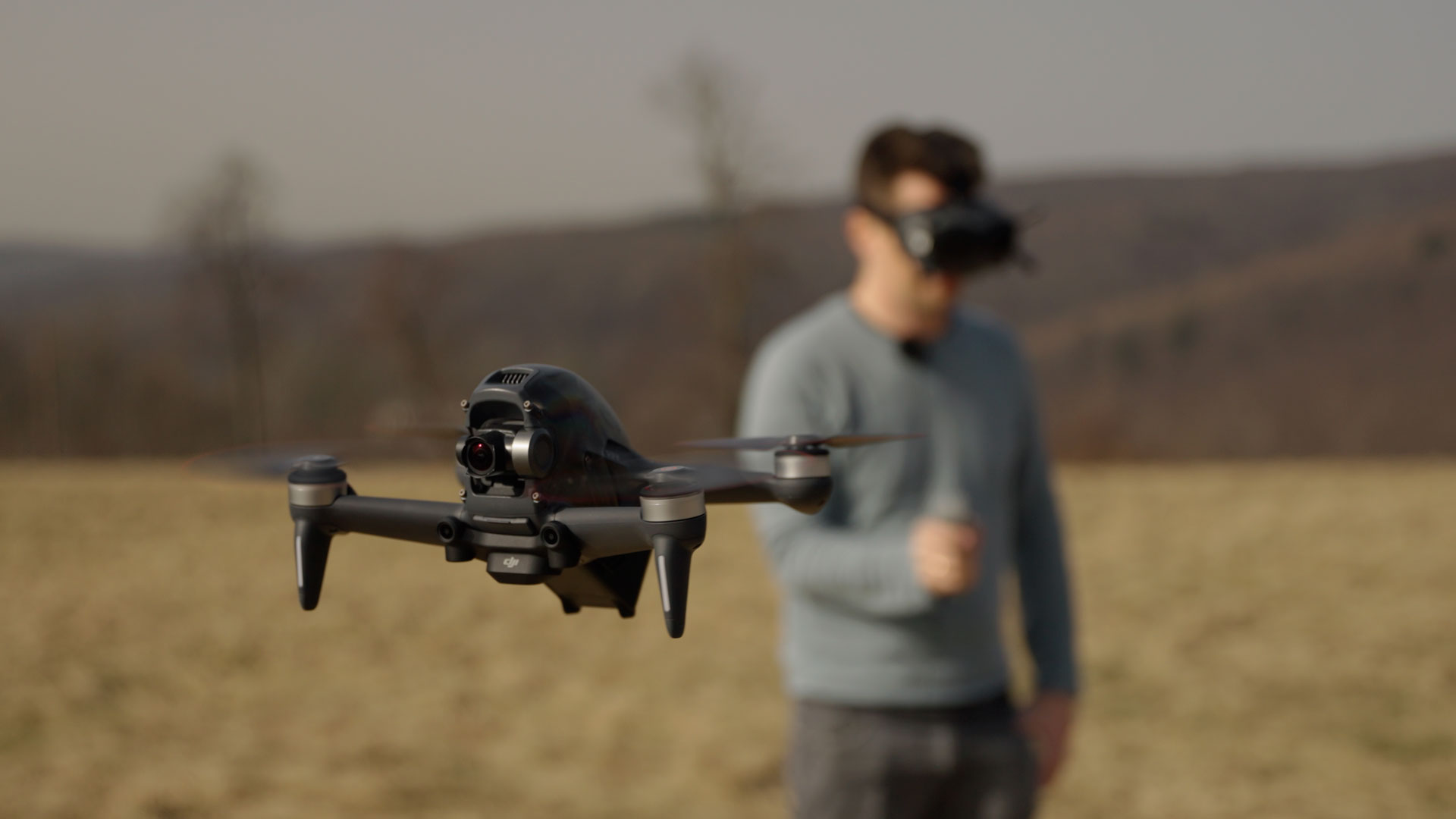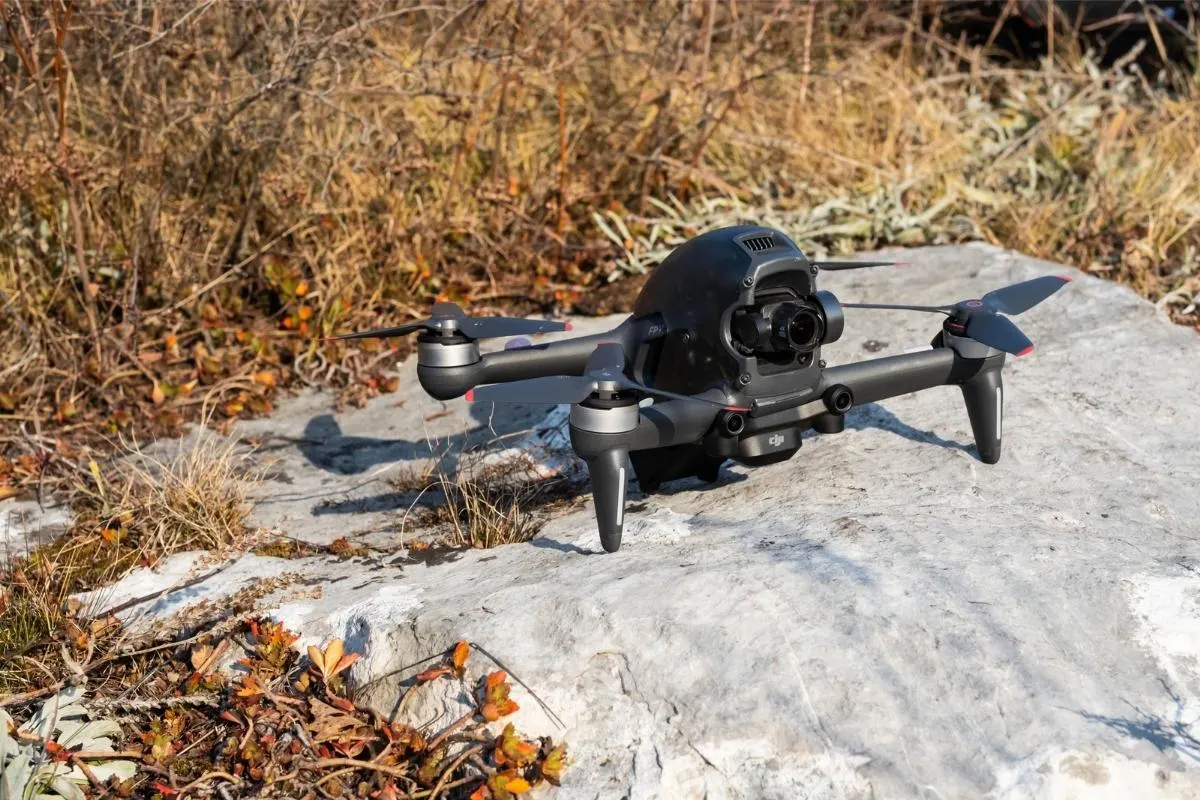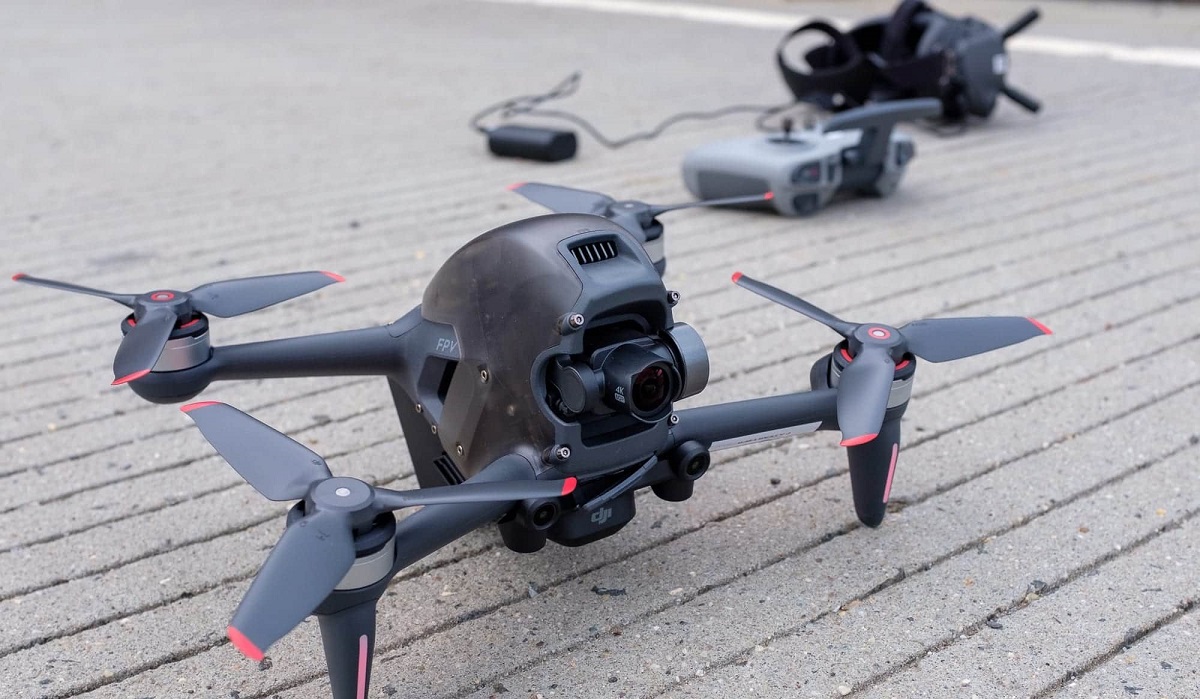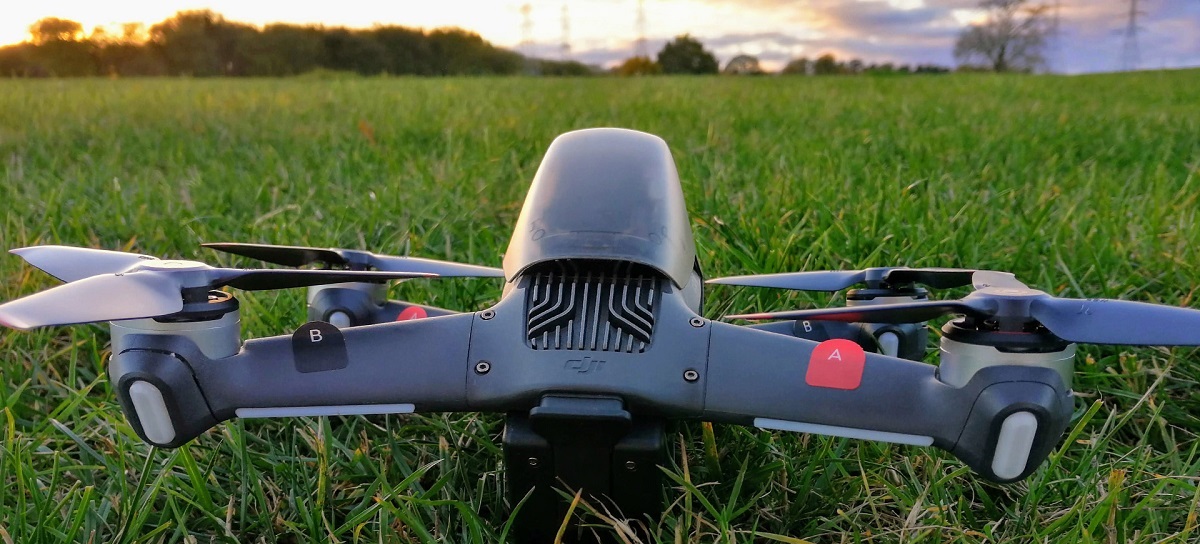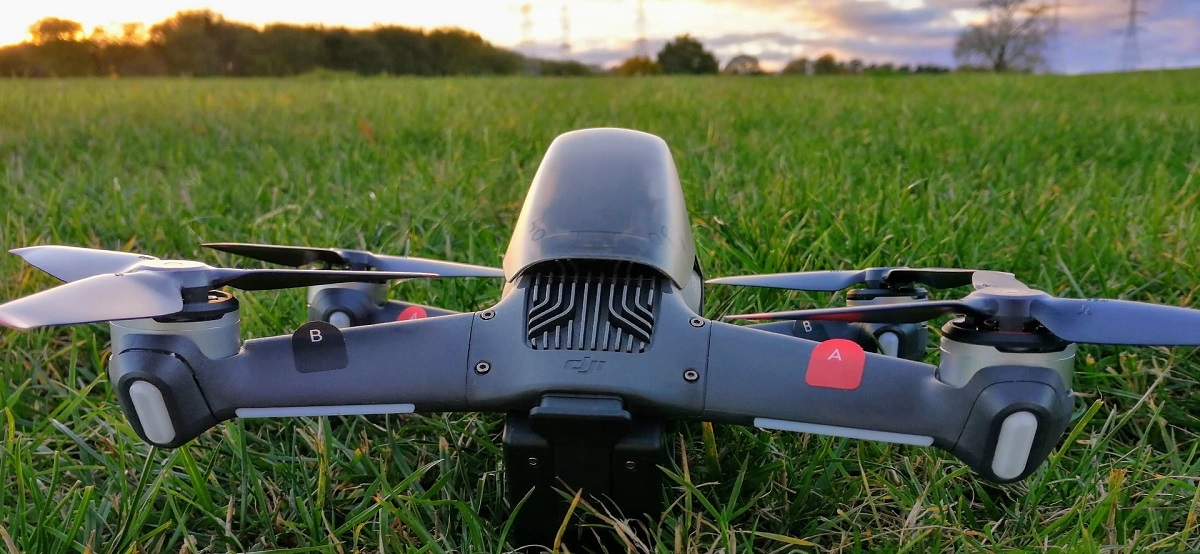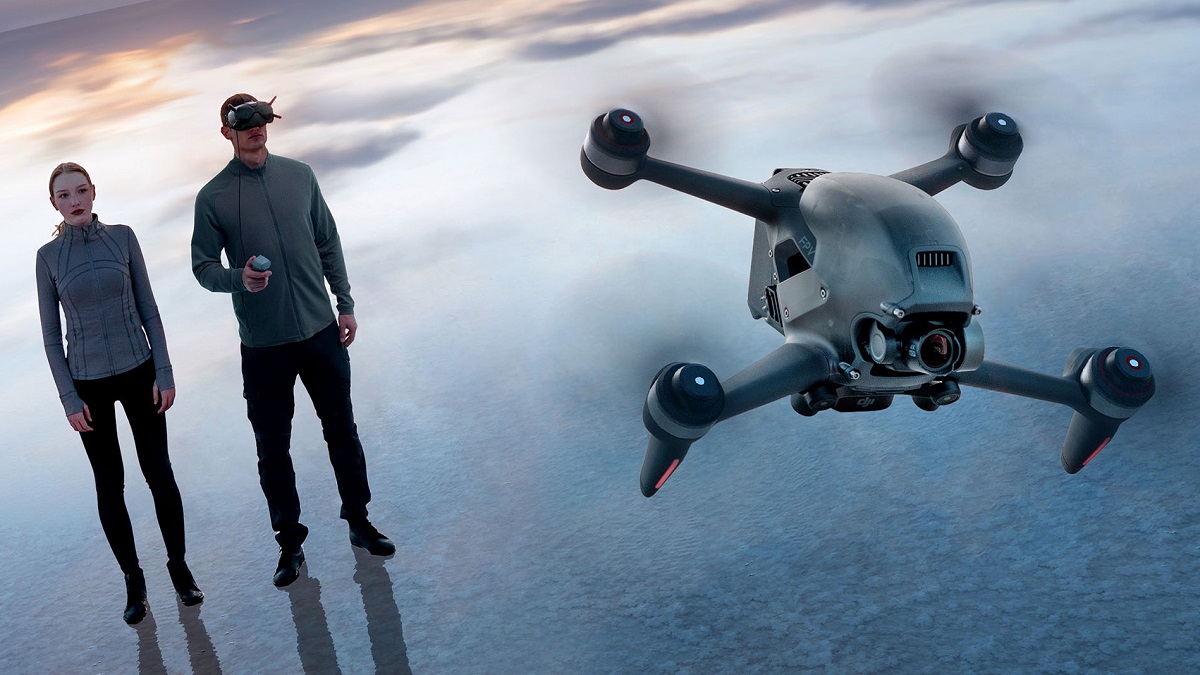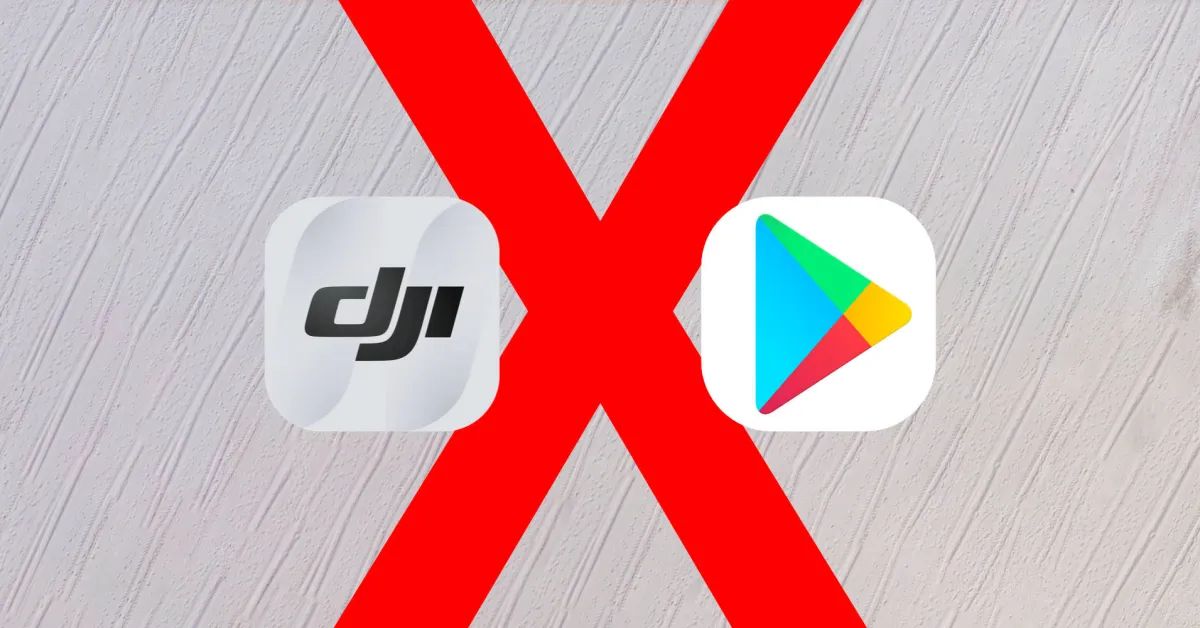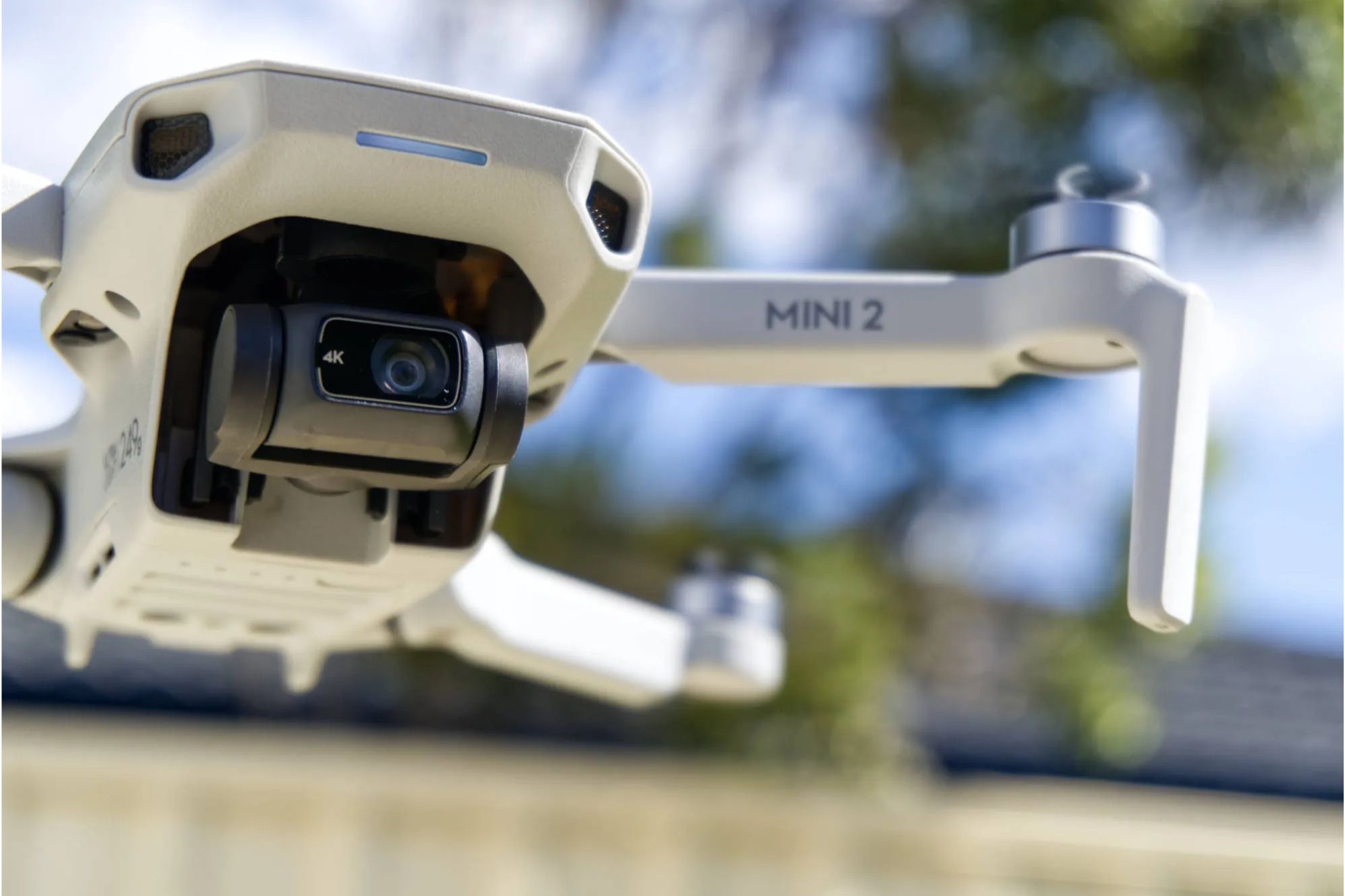Introduction
Welcome to the exciting world of flying the DJI FPV drone! Whether you’re a beginner or an experienced pilot, this guide will walk you through the essential steps to get started with your drone. The DJI FPV drone combines the thrill of high-speed flights with the ease of use and advanced features that DJI products are known for.
Designed with immersive first-person view (FPV) capabilities, the DJI FPV drone allows you to experience the thrills of flying as if you were in the cockpit. With its powerful motors, agile maneuverability, and advanced flight modes, you can capture stunning aerial footage and explore new perspectives like never before.
Before diving into the world of FPV drone flying, it’s important to understand the basics. This guide will cover everything from assembling and preparing your drone to mastering flight controls and capturing amazing footage. By the end of this guide, you’ll have the knowledge and confidence to take your DJI FPV drone to new heights.
It’s worth noting that flying a DJI FPV drone requires responsible piloting and adherence to local laws and regulations. Always ensure that you fly in approved areas, respect privacy, and prioritize safety. Remember, the joy of flying your drone comes with the responsibility of being a respectful and conscientious pilot.
So, whether you’re looking to explore aerial photography, push your flying skills to the limit, or simply have fun with a high-performance drone, let’s get started on this exhilarating journey with your DJI FPV drone!
Step 1: Getting Familiar with Your DJI FPV Drone
Before you take to the skies with your DJI FPV drone, it’s essential to get familiar with the various components and features of the drone. This step will ensure that you have a solid understanding of how the drone works and how to operate it safely.
The DJI FPV drone consists of several key components, including the drone itself, the remote controller, and the goggles. Take the time to carefully examine each component and understand its functions.
Start by examining the drone itself. Familiarize yourself with its design, including the front and back, top and bottom, and left and right sides. Take note of the location of the propellers, the landing gear, and any sensors or cameras mounted on the drone.
Next, inspect the remote controller. Pay attention to the different buttons and controls, such as the power button, the joystick, and the various switches. Make sure you understand how to properly hold and operate the controller.
Lastly, take a close look at the goggles. These FPV goggles allow you to see the live video feed from the drone’s camera while flying. Adjust the straps to fit your head comfortably, and familiarize yourself with the controls on the goggles, such as the power button and the adjustment knobs for focus and IPD (interpupillary distance).
Once you are familiar with the physical components, it’s time to delve into the features and capabilities of the DJI FPV drone. The drone is equipped with advanced technology that enables it to fly at high speeds and capture stunning footage. Some key features to familiarize yourself with include:
- Flight Modes: The DJI FPV drone offers a range of flight modes, such as Normal, Sport, and Manual mode. Each mode provides a different flying experience, so take the time to understand their differences and when to use each mode.
- Obstacle Sensing: The drone is equipped with obstacle sensing sensors to help avoid collisions. Familiarize yourself with how this feature works and understand its limitations.
- Intelligent Flight Modes: The DJI FPV drone includes intelligent flight modes like ActiveTrack, which allows you to track and follow a subject automatically. Explore these modes and learn how to use them effectively.
By becoming familiar with the components, controls, and features of your DJI FPV drone, you will be well-prepared to move on to the next steps of assembling and preparing your drone for flight. Remember to always refer to the user manual provided by DJI for detailed instructions on operating your specific model.
Step 2: Assembling and Preparing Your DJI FPV Drone
Now that you’re familiar with the components and features of your DJI FPV drone, it’s time to assemble and prepare it for flight. Proper assembly and preparation are crucial to ensure a safe and successful flying experience.
Start by finding a suitable location to assemble your drone. Choose an open area away from obstacles, people, and pets. A flat surface, preferably grass or a landing pad, is ideal for setting up your drone.
Begin by attaching the propellers to the drone. The DJI FPV drone uses a self-tightening propeller system, which means you can simply press down and twist the propellers onto the motor shafts until they are securely fastened. Make sure to align the propellers correctly, following the markings on the drone.
Next, insert the battery into the designated compartment on the drone. Ensure that the battery is fully charged before inserting it. The DJI FPV drone uses a smart battery system, so it’s important to monitor the battery level and follow proper charging and storage guidelines.
Once the battery is securely in place, power on the drone by pressing the power button. You will notice lights and indicators on the drone that indicate its status. Pay attention to these indicators, as they provide important information about the drone’s connectivity and readiness for flight.
Now, it’s time to connect the remote controller to the drone. Power on the remote controller and make sure it is in pairing mode. Follow the instructions in the user manual to establish a stable connection between the controller and the drone. Once connected, you can verify the connection by checking the status indicators on both devices.
Before taking flight, it’s crucial to check the calibration of the drone. The DJI FPV drone comes with built-in sensors that ensure stable flight and accurate control. Follow the instructions in the DJI Fly app to calibrate the sensors, including the compass and IMU (inertial measurement unit). Proper calibration will help optimize flight performance and reduce potential issues during flight.
Lastly, familiarize yourself with the controls on the remote controller. Take a moment to understand the functions of each button, dial, and switch. Ensure that you are comfortable with the layout and responsiveness of the controls.
Now that your DJI FPV drone is assembled, powered on, and properly calibrated, you are ready to move on to the next step: understanding the DJI Fly app. Stay tuned for the next section, where we’ll explore the features and functionality of the app to enhance your FPV flying experience!
Step 3: Understanding the DJI Fly App
The DJI Fly app is an essential companion for flying your DJI FPV drone. It provides a user-friendly interface that allows you to control and customize various settings, access intelligent flight modes, view live video feed, and manage your flight data.
First, make sure your smartphone or tablet is compatible with the DJI Fly app. Check the DJI website or the app’s documentation for the list of supported devices.
Once you’ve confirmed compatibility, download and install the DJI Fly app from the App Store or Google Play Store. Open the app and follow the on-screen instructions to create an account and log in.
After logging in, you’ll be greeted with the home screen of the DJI Fly app. Spend some time exploring the different functions and menus available. Here are some key features and settings you should familiarize yourself with:
- Status Bar: Located at the top of the app’s interface, the status bar provides important information about the drone’s connection status, battery level, GPS signal, and more.
- Main Menu: Accessible from the upper left corner of the app, the main menu provides quick access to various settings and features, including camera settings, flight modes, intelligent features, and more.
- Camera Settings: Explore the camera settings within the app to adjust crucial parameters such as resolution, frame rate, exposure, and white balance. Understanding these settings will help you capture high-quality footage.
- Intelligent Flight Modes: The DJI Fly app offers a range of intelligent flight modes, such as ActiveTrack, Waypoints, and QuickShots. Each mode provides unique functionalities and creative options for capturing dynamic shots.
- Livestreaming and Recording: The app allows you to stream live video footage from the drone’s camera to your mobile device. You can also initiate video recordings and capture photos directly through the app.
- Flight Records: The DJI Fly app keeps a record of all your flights, providing detailed information about flight time, distance, altitude, and more. Use this feature to track your progress and review your flight data.
Take some time to navigate through the different screens and menus of the DJI Fly app. Familiarize yourself with the layout and functionalities. Remember to read the app’s user manual for a more comprehensive understanding of its features and settings.
Understanding the DJI Fly app will greatly enhance your FPV drone flying experience. It provides you with the tools and controls to capture stunning footage, access intelligent flight modes, and customize your flying settings. So, take some time to master the app before moving on to the next step: setting up and calibrating your DJI FPV drone for optimal performance.
Step 4: Setting Up and Calibrating Your DJI FPV Drone
Setting up and calibrating your DJI FPV drone is a crucial step to ensure optimal performance and stability during flight. Proper setup and calibration will help to minimize errors and ensure a safe and enjoyable flying experience.
Begin by finding a suitable location for calibration. It should be an open area away from electromagnetic interference, such as power lines or metal structures. Ensure that the area is free from potential obstacles and provides a clear line of sight to the GPS satellites.
Now, power on your drone and open the DJI Fly app on your mobile device. Make sure your drone and the controller are connected and the video feed is visible on your device’s screen.
Navigate to the main menu of the DJI Fly app and locate the calibration options. You will typically find options for compass, IMU, and gimbal calibration. Follow the on-screen instructions provided by the app for each calibration process.
First, perform the compass calibration. This process ensures that the drone’s compass is accurately calibrated for navigation and positioning. Follow the app’s instructions to rotate the drone along different axes until the calibration is complete.
Next, conduct the IMU calibration. IMU stands for inertial measurement unit, which helps the drone maintain stability and accurate flight controls. Follow the app’s instructions to place the drone on a level surface and keep it stable while the calibration process takes place.
After completing the IMU calibration, you may be prompted to calibrate the gimbal. The gimbal is responsible for stabilizing the camera during flight, ensuring smooth and steady footage. Follow the app’s instructions to perform the gimbal calibration.
Once all calibrations are complete, thoroughly inspect the drone and ensure that all components, such as propellers and landing gear, are securely attached. Check that the battery is properly inserted, and the drone is powered on.
Before taking off for your first flight, it’s essential to perform a pre-flight checklist. This includes checking the battery level, verifying the GPS signal, ensuring the remote controller is connected, and inspecting the surroundings for any potential hazards.
Remember, calibrating your DJI FPV drone and performing the pre-flight checklist are essential steps to ensure a safe and successful flight. By taking the time to properly set up and calibrate your drone, you’ll have peace of mind knowing that it’s ready to perform at its best.
Now that your DJI FPV drone is calibrated and ready for flight, let’s move on to the next step: learning basic flight controls and maneuvers. Stay tuned for valuable tips to help you navigate the skies with confidence!
Step 5: Learn Basic Flight Controls and Maneuvers
Mastering the basic flight controls and maneuvers of your DJI FPV drone is essential for safe and enjoyable flying. Understanding how to maneuver the drone confidently will allow you to capture stunning footage and navigate through various flight scenarios.
Start by practicing the fundamental flight controls: throttle, pitch, roll, and yaw. The throttle controls the altitude of the drone – pushing the throttle stick forward will increase the altitude, and pulling it back will decrease it.
Pitch and roll control the forward and sideways movement of the drone. Pushing the pitch stick forward will make the drone move forward, while pulling it back will make it move backward. Similarly, pushing the roll stick to the left or right will make the drone move sideways in the corresponding direction.
Yaw controls the rotation of the drone. Moving the yaw stick to the left or right will make the drone rotate accordingly. It’s important to practice controlling the yaw smoothly to avoid abrupt movements during flight.
Once you’re comfortable with the basic flight controls, it’s time to practice some essential maneuvers. These maneuvers will help you improve your flying skills and allow you to navigate in different scenarios:
- Hovering: Practice keeping the drone stable in mid-air, maintaining its position by adjusting throttle, pitch, and roll as needed.
- Forward and backward flights: Fly the drone in a straight line, gradually increasing and decreasing speed to practice smooth acceleration and deceleration.
- Turning: Practice making gradual and controlled turns by rotating the drone using the yaw control. Start with small turns and gradually increase the angle.
- Figure 8s: Fly the drone in a figure 8 pattern, combining different movements such as forward flights, turns, and altitude adjustments.
- Stall recovery: Simulate a sudden loss in altitude by reducing throttle, and practice recovering by smoothly increasing throttle and adjusting pitch.
Remember, practice makes perfect. Spend time honing your skills and becoming familiar with the drone’s responses to different inputs. Start with slow and controlled movements before moving on to more advanced maneuvers.
Additionally, it’s important to keep safety in mind while flying. Always fly in open areas away from people, buildings, and obstacles. Be aware of your surroundings and consider weather conditions that may affect flight stability.
By mastering the basic flight controls and maneuvers, you’ll gain the confidence to explore more advanced flight modes and capture amazing footage with your DJI FPV drone. So, keep practicing and honing your skills as we move on to the next step: mastering flight modes and intelligent features!
Step 6: Mastering Flight Modes and Intelligent Features
As you become more proficient in controlling your DJI FPV drone, it’s time to explore and master the various flight modes and intelligent features it offers. These modes can elevate your flying experience, add creativity to your shots, and make capturing amazing footage a breeze.
One of the most popular flight modes is the ActiveTrack mode. This feature allows you to select and track a subject, whether it’s a person, vehicle, or any other object. Once the subject is selected, the drone will automatically follow and keep it in the frame, allowing you to capture dynamic footage while keeping your hands free.
Another useful mode is the Waypoints mode. In this mode, you can pre-plan a flight path by placing waypoints on the map within the DJI Fly app. The drone will then autonomously fly along this path, allowing you to focus on capturing the perfect shot without worrying about controlling the drone’s movement.
For those looking to capture cinematic shots, the Cinematic mode is a great option. This mode slows down the drone’s movement and enhances the smoothness of the footage, giving your shots a professional and polished look.
The DJI FPV drone also offers a variety of QuickShot modes, which are pre-programmed flight patterns that create impressive aerial shots. These modes include Rocket, Circle, Dronie, Helix, and Boomerang, each offering a unique and stunning perspective.
As you explore these flight modes, it’s important to familiarize yourself with adjusting the camera settings and angles in real-time. The DJI Fly app provides easy access to these settings, allowing you to adjust exposure, white balance, resolution, and more to capture the perfect shot.
Intelligent features such as obstacle avoidance and automatic return to home function are crucial for a safe flying experience. Understanding and utilizing these features will help you prevent collisions and retrieve your drone in case of any unexpected situations.
Remember, practice and experimentation are key to mastering these flight modes and intelligent features. Start by flying in an open area with plenty of space to maneuver and test out different modes. Gradually integrate them into your flights as you gain confidence and proficiency.
Keep in mind that every flight mode and intelligent feature has its own specific controls and settings. Take the time to read the user manual and familiarize yourself with the instructions provided by DJI for a thorough understanding of each feature.
By mastering flight modes and intelligent features, you’ll have the tools and capabilities to capture breathtaking aerial shots and videos with your DJI FPV drone. So, experiment, explore, and let your creativity soar!
Step 7: Pre-Flight Checklist and Safety Measures
Before taking your DJI FPV drone to the skies, it’s crucial to perform a pre-flight checklist and adhere to important safety measures. This step ensures that you have a safe and successful flying experience while minimizing the risk of accidents or mishaps.
Start by checking the battery level of your drone. Ensure that the battery is fully charged and has enough power for your intended flight duration. A low battery during flight can lead to an emergency landing or loss of control.
Verify that your DJI FPV drone is in good condition by conducting a visual inspection. Examine the propellers, landing gear, and any sensors or cameras for any signs of damage or malfunctions. It’s important to address any issues before taking off.
Next, check the GPS signal strength. A strong GPS signal ensures a stable and accurate flight. Ensure that the drone has established a strong connection with the GPS satellites before lifting off.
Verify that the remote controller is properly connected to the drone. Ensure that the connection is stable and the control inputs are responsive. It’s crucial to have a strong and reliable connection for optimal control during flight.
Survey the flying area for any potential hazards or obstacles. Ensure that there are no people, buildings, or other nearby drones that could pose a risk during flight. Flying in open areas away from congested areas is recommended.
Take note of the current weather conditions and any applicable regulations. Avoid flying in strong winds, rain, or foggy conditions that could compromise the stability and safety of your flight. Additionally, be sure to comply with all local laws and regulations regarding drone operation.
Before taking off, it’s important to familiarize yourself with the emergency procedures. Understand how to initiate an emergency landing or return to home function in case of any unforeseen circumstances or signal loss.
Finally, ensure that you have a clear plan for your flight, including your desired route and any specific shots or maneuvers you intend to capture. Having a clear plan helps you stay focused and in control during flight.
Remember, safety should always be your top priority as a responsible drone pilot. By performing a pre-flight checklist and following safety measures, you can minimize the risk of accidents and ensure a safe and enjoyable flying experience.
Now that you’ve completed the pre-flight checklist and taken necessary safety measures, you’re all set to take to the skies with your DJI FPV drone. So, double-check everything, put on your goggles, and get ready for an incredible aerial adventure!
Step 8: Tips and Tricks for Capturing Amazing Aerial Footage
Now that you’ve mastered the flight controls and are familiar with the features of your DJI FPV drone, it’s time to take your aerial footage to the next level. Here are some tips and tricks to help you capture stunning and cinematic shots:
1. Plan your shots: Before you start flying, have a clear plan in mind for the shots you want to capture. Visualize the composition and think about the story you want to tell through your footage. This will help you be more intentional in your flight and capture more engaging shots.
2. Take advantage of altitude: Experiment with different altitudes to add depth and perspective to your shots. Lower altitudes can provide a more immersive feeling, while higher altitudes can showcase the surrounding landscape in a unique way.
3. Utilize different camera angles: Try tilting the camera up or down to capture interesting angles and perspectives. This can add drama and diversity to your footage, bringing a new dimension to your shots.
4. Use manual camera settings: Take control of your camera settings to achieve the desired look for your footage. Adjust the exposure, shutter speed, and white balance based on the lighting conditions and the mood you want to convey.
5. Experiment with different flight modes: Don’t be afraid to explore the various flight modes available in your DJI FPV drone. Each mode offers unique functionalities that can help you capture dynamic and creative shots. For example, try using the ActiveTrack mode to track a moving subject or utilize the QuickShot modes for pre-programmed cinematic flight paths.
6. Add motion and smoothness: Practice flying with smooth and controlled movements to add a cinematic feel to your footage. Avoid sudden jerky movements and aim for fluid and graceful flight patterns.
7. Follow the rule of thirds: The rule of thirds is a classic composition technique used in photography and videography. Imagine splitting your shot into a grid of nine equal sections, and position your subject or point of interest along the lines or at the intersections. This creates visually appealing and balanced shots.
8. Consider the lighting: Pay attention to the direction and quality of light when filming. Golden hour (the hour after sunrise or before sunset) often provides the most stunning lighting conditions, with soft and warm light that adds a magical touch to your footage.
9. Edit your footage: Once you’re done capturing your aerial footage, take the time to edit and enhance it. Use video editing software to trim, stabilize, and color grade your footage to give it a professional look and feel.
10. Practice, practice, practice: The more you fly and experiment, the better your footage will become. Don’t be discouraged by initial challenges or mistakes. Keep practicing, try new techniques, and continue learning to refine your aerial filming skills.
By applying these tips and tricks, you’ll be well on your way to capturing amazing aerial footage with your DJI FPV drone. So, get creative, explore different shooting techniques, and let your imagination soar!
Conclusion
Congratulations! You have completed the journey of getting familiar with and mastering your DJI FPV drone. Through this guide, you have learned the basics of flying, assembling, and calibrating your drone, as well as understanding the DJI Fly app and exploring advanced flight modes.
By following the steps outlined in this guide, you have gained the knowledge and skills necessary to confidently pilot your DJI FPV drone and capture amazing aerial footage. From understanding the components to mastering flight controls and utilizing intelligent features, you are now equipped to embark on incredible aerial adventures.
However, it’s important to remember that responsible drone operation is essential. Always prioritize safety by following local laws and regulations, conducting pre-flight checks, and being mindful of your surroundings. Respect privacy, fly in approved areas, and consider the privacy and safety of others.
Keep practicing and experimenting with different techniques to elevate your aerial photography and videography. The more you fly, the more you will refine your skills and capture breathtaking shots that tell captivating stories.
Make sure to stay updated with the latest firmware and software updates from DJI to take advantage of new features and improvements for your DJI FPV drone.
Lastly, enjoy the journey! Flying a DJI FPV drone opens up a world of creativity and exploration. Embrace the excitement, appreciate the beauty of the world from above, and create memories that will last a lifetime.
Now, it’s time to grab your DJI FPV drone, put on your goggles, and take flight into the incredible world of aerial adventure!







